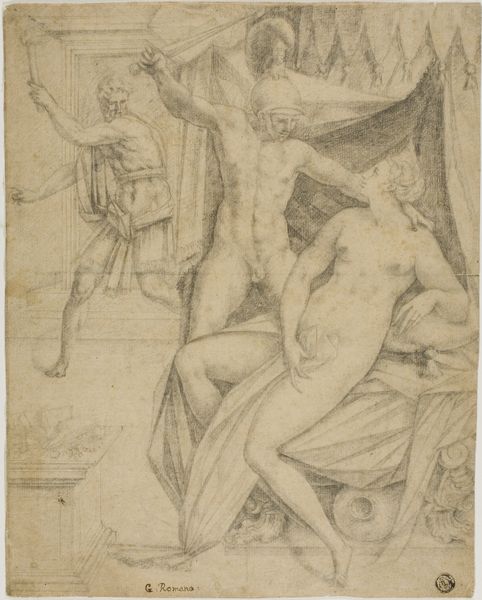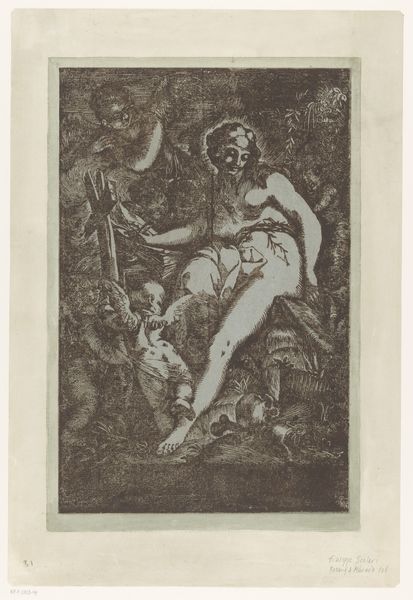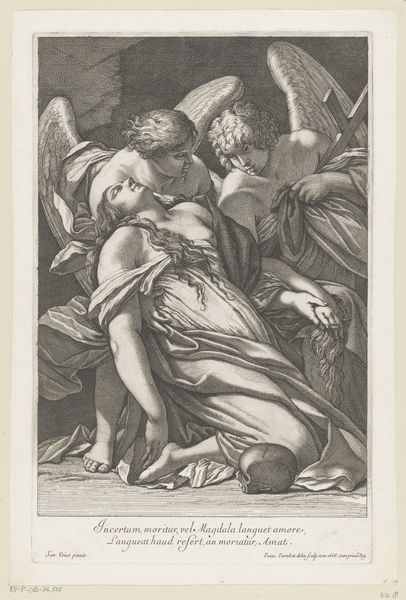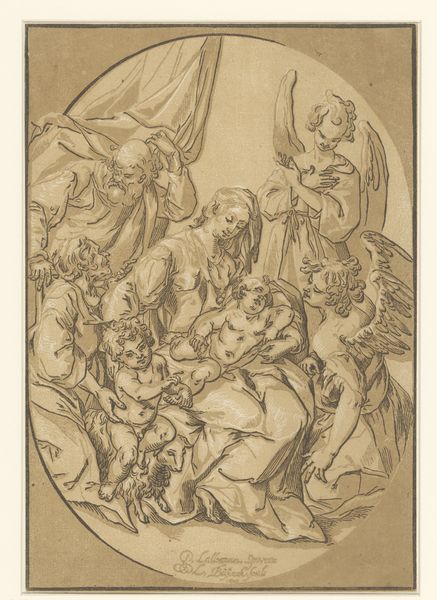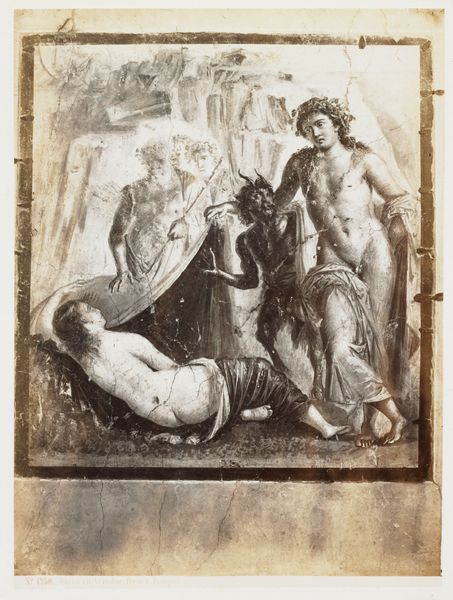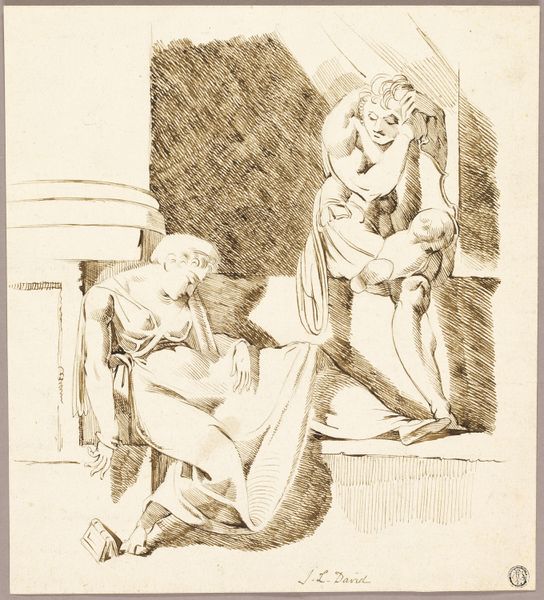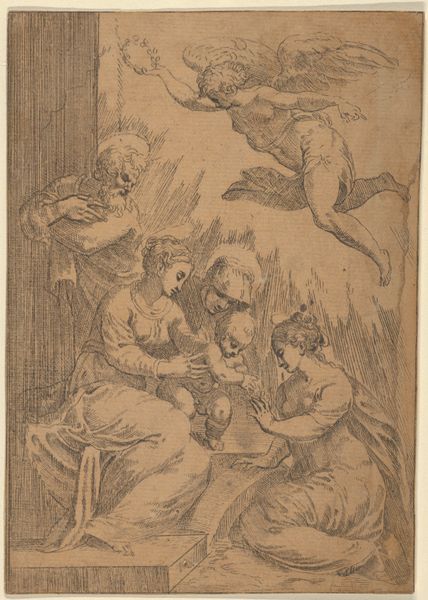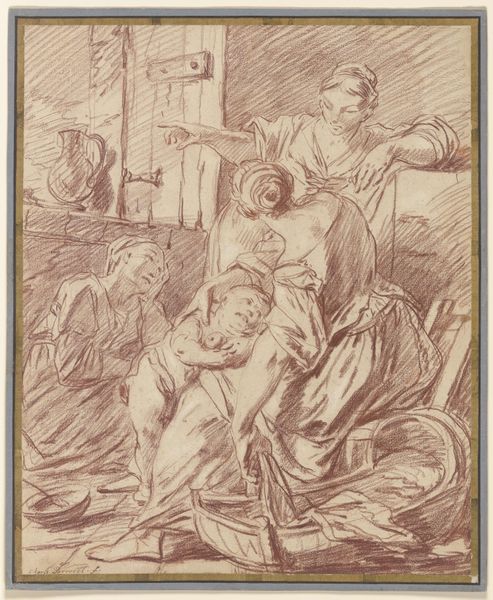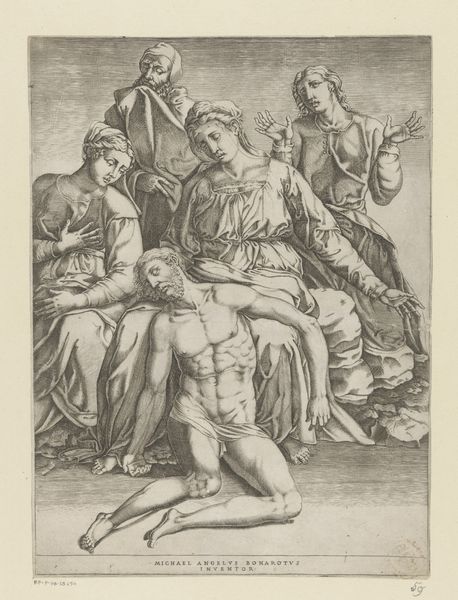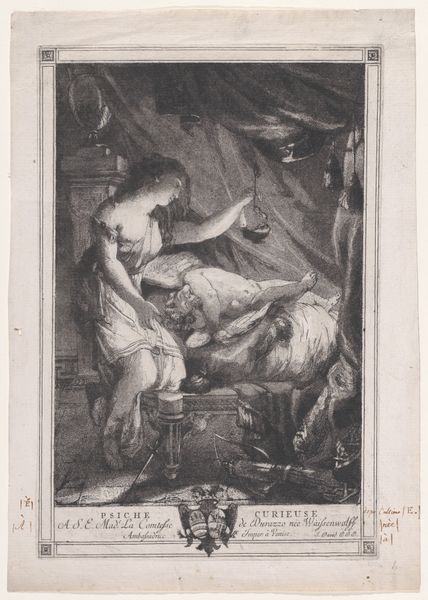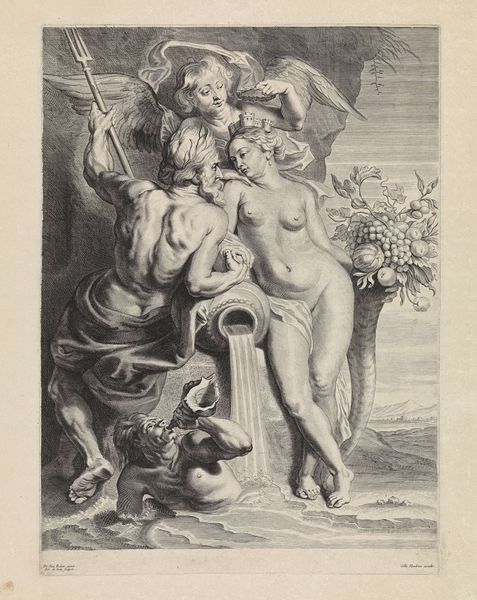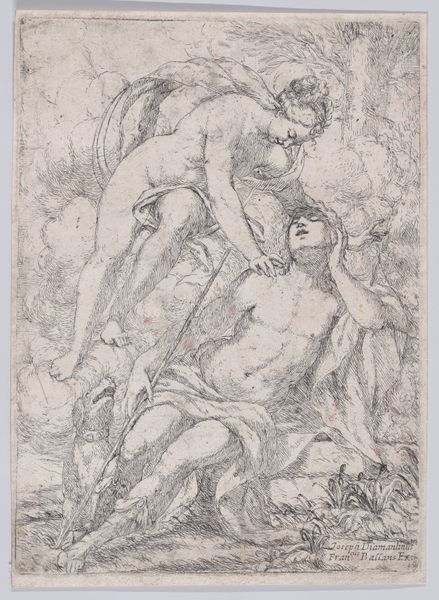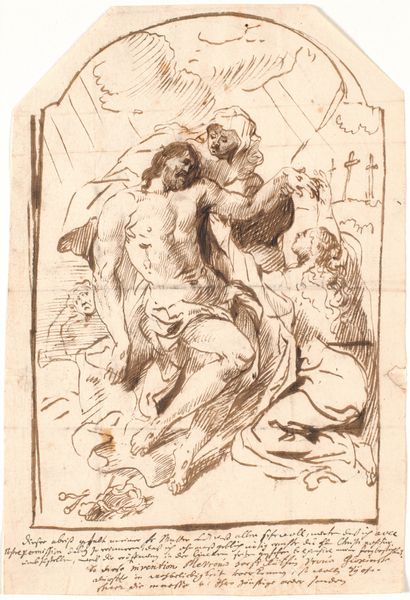
drawing, print, etching, intaglio
#
drawing
#
narrative-art
# print
#
etching
#
intaglio
#
caricature
#
figuration
#
history-painting
#
italian-renaissance
#
nude
Dimensions: Mat: 18 1/16 × 13 7/16 in. (45.8 × 34.2 cm) Sheet (trimmed): 12 7/8 × 9 3/4 in. (32.7 × 24.7 cm)
Copyright: Public Domain
Curator: Right now, we’re looking at “Pieta,” an intaglio print made between 1540 and 1545 by Antonio Fantuzzi. Editor: It's profoundly unsettling. There's a tenderness fighting its way through an almost grotesque theatricality. It feels emotionally… exposed. Curator: Indeed. As an iconographer, what stands out for you in the visual language of this image? Editor: Well, instantly the ladder looming behind the figures points to the method and space of torture and the drapery veiling the figures shrouds raw, acute sorrow. The symbols are stark; the almost carelessly placed instruments of crucifixion contrast so vividly with the detailed humanity of the figures themselves. There’s a sense of collapse, physical and emotional, rendered through the cascading figures. Curator: Absolutely. Fantuzzi utilizes etching to achieve some extremely nuanced effects. The fine lines almost quiver with emotion. It’s particularly evident in the faces of the mourners. They appear almost… raw, scraped bare. Do you think the lack of idealization enhances its impact? Editor: Unquestionably. There's an honesty, or perhaps even vulnerability. This isn't the serenely beautiful Pieta of High Renaissance marble. This has less to do with a heavenly experience and more to do with earthy grief. This etching style pulls the narrative down to a painful visceral register. The artist makes sure the agony remains right under your skin. Curator: And that grounding is crucial. By presenting a more realistically rendered Christ, one who isn't polished or distanced, the anguish is much more easily accessible and personally resonant. The piece moves away from merely retelling the Bible narrative and more toward the shared human condition of loss and grief. Editor: Exactly. It speaks to that very human craving to hold, to witness, to mourn in community. Fantuzzi does well here to provide a stage for that grief and contemplation through accessible figures and well-laid iconic reference. Curator: Looking closely at Fantuzzi’s composition and style leaves me thinking about how artists then were willing to break with expectations to reveal truth, raw and uncompromising, and often messy, in its effect. It takes guts, truly, to present vulnerability. Editor: It sure does. It can feel so precarious—like baring one’s throat to the world. And I thank Antonio Fantuzzi for this piece because it serves as a crucial reminder that it’s sometimes our greatest vulnerability and pain, stripped bare, that connects us most profoundly.
Comments
No comments
Be the first to comment and join the conversation on the ultimate creative platform.

